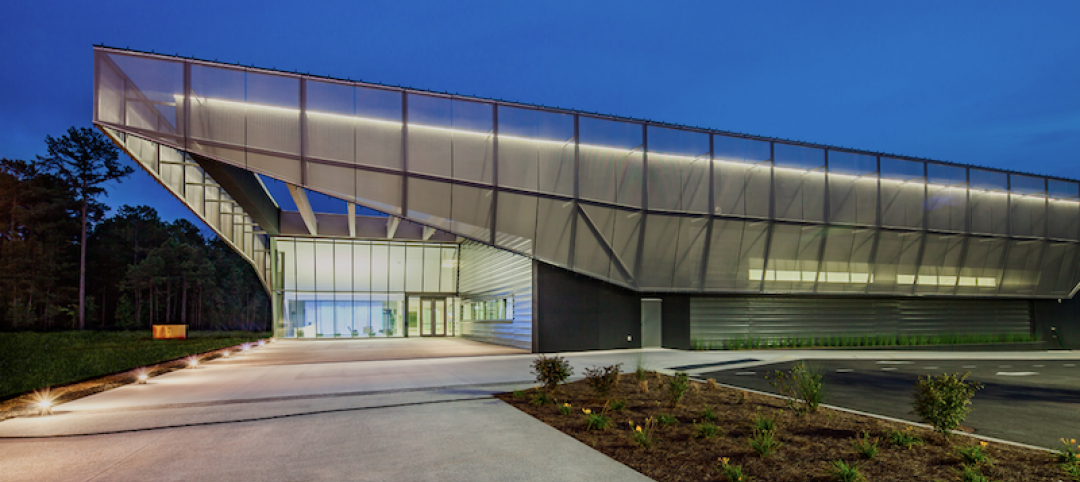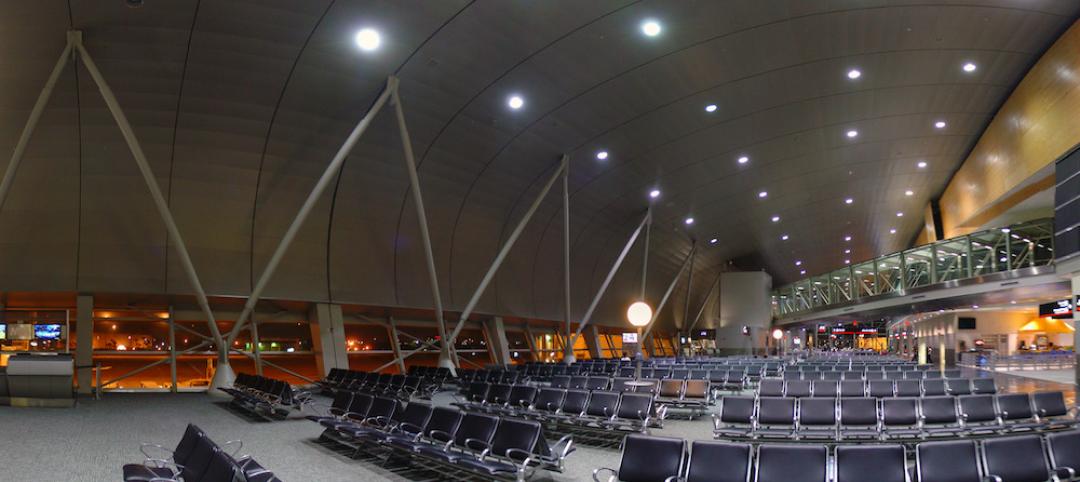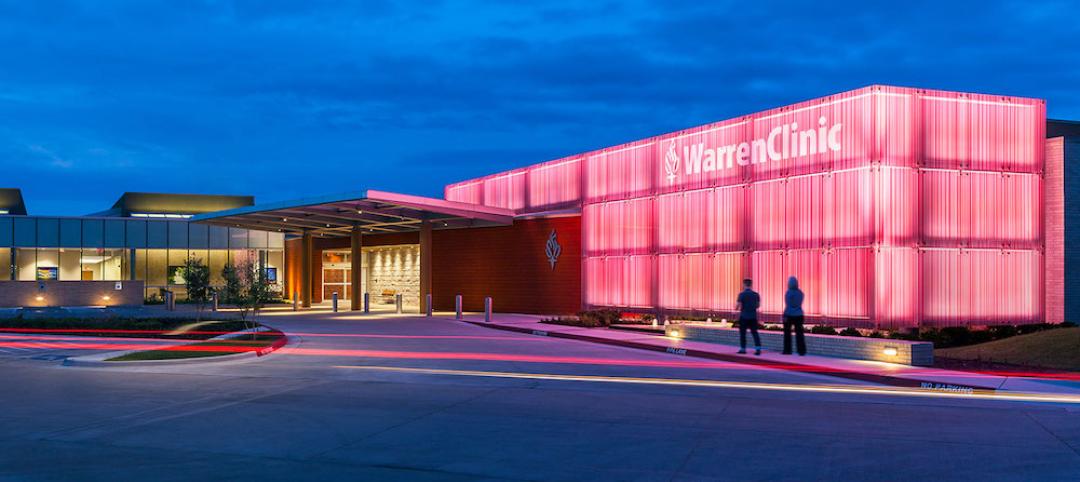The butterfly-shaped facility that is the new Rush University Medical Center (RUMC) sits quietly on the Near West Side of Chicago awaiting the official opening of its doors this month. The RUMC facility and its staff are preparing to handle any type of pandemic or chemical, biological, or radiological (CBR) disaster that might hit Chicago.
At a cost of $654 million, the 14-story, 830,000-sf medical center, designed by a Perkins+Will team led by design principal Ralph Johnson, FAIA, LEED AP, is distinguished in its ability to handle disasters.
If such an event were to hit the Chicago area, the emergency response center could offer an unprecedented level of readiness for a mass outbreak of infectious disease, bioterrorist attack, or hazmat incident.
“This is the nation’s first facility designed to provide care for patients involved in chemical, biological, and radiological disasters,” says Dr. Dino Rumoro, RUMC’s chairman of emergency medicine. “We have to be ready for any type of disaster that can hit the city of Chicago.”
The 40,000-sf emergency room includes:
- 60 individual treatment bays that can accommodate up to two patients per bay, doubling the normal patient load
- The ability to control airflow to seal off contagions in parts of the hospital
- Ambulance bays that can be converted into decontamination centers, so that CBR victims could be sprayed down in large groups
Special equipment and a flexible infrastructure allow RUMC to accommodate surge capacity to treat mass casualties beyond the ER. Pillars in the main lobby are equipped with hidden panels that provide access to oxygen and other clinical gases, allowing RUMC to accommodate even more beds in a disaster scenario.
The floors above the emergency room are devoted to the interventional platform, where diagnostic testing, surgical, and interventional services and recovery are located within a short distance of each other. This results in enhanced collaboration between medical specialists, patients, and families. A total of 42 procedure rooms with enlarged operating rooms provide the latest surgical technology.
The new hospital adds 304 individual adult and critical beds on its top five floors, increasing the total number of beds across existing and new facilities to 664, making RUMC one of the largest hospitals in the area.
The hospital is awaiting LEED Gold certification. In addition to using recycled construction materials and considerable water- and energy-saving measures, the hospital has three green roofs—one atop the main tower, another on the ninth floor open to staff, and a third atop the entry pavilion. BD+C
Related Stories
| Aug 2, 2016
Top 130 Green Building Architecture Firms
Gensler, Stantec, and HOK top Building Design+Construction’s annual ranking of the nation’s largest green building sector architecture and A/E firms, as reported in the 2016 Giants 300 Report.
Architects | Aug 2, 2016
Bradley Lukanic named CannonDesign's CEO
In his new role, Lukanic takes helm of an experienced leadership team crafting and achieving optimal short- and long-term strategies and business outcomes
| Aug 1, 2016
K-12 SCHOOL GIANTS: In a new era of K-12 education, flexibility is crucial to design
Space flexibility is critical to classroom design. Spaces have to be adaptable, even allowing for drastic changes such as a doubling of classroom size.
| Jul 29, 2016
AIRPORT FACILITIES GIANTS: Airports binge on construction during busy year for travel
Terminal construction will grow by nearly $1 billion this year, and it will keep increasing. Airports are expanding and modernizing their facilities to keep passengers moving.
| Jul 29, 2016
Top 35 Airport Terminal Architecture and A/E Firms
Corgan, HOK, and Gensler top Building Design+Construction’s annual ranking of the nation’s largest airport terminal architecture and A/E firms, as reported in the 2016 Giants 300 Report.
Architects | Jul 28, 2016
Connecting the dots: Architecture and design in a changing world
What do Tesla, Airbnb and Amazon have in common? They’re all shifting the paradigm for quality of life and the built environment, as CallisonRTKL senior associate VP Jayson Lee explains.
| Jul 26, 2016
ENGINEERING GIANTS: Firms continue to push innovation
Trends include 3D printing, modular hospitals, and fluid dampers.
| Jul 26, 2016
Top 80 Architecture/Engineering firms
Stantec, HOK, and Callison RTKL once again top Building Design+Construction's 2016 ranking of the largest architecture/engineering firms in the United States.
| Jul 25, 2016
Top 35 Engineering/Architecture Firms
AECOM, Jacobs, and Thornton Tomasetti head Building Design+Construction's 2016 ranking of the largest engineering/architecture firms in the United States.
| Jul 25, 2016
Top 100 Architecture Firms
Gensler surpasses $1.1 billion in revenue, topping Building Design+Construction’s annual ranking of the nation’s largest architecture firms, as reported in the 2016 Giants 300 Report.
















